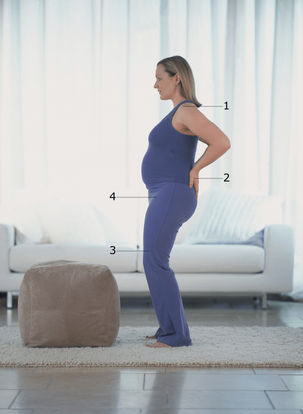23 weeks and 4 days pregnant

The joints and bones of the hand are still very soft, although the cartilage skeleton is now gradually being replaced by bone. This image shows well the numerous capillaries supplying blood to the hands, right down to the fingertips.
Over the next few weeks, your baby will take on more of the appearance of a newborn.
Your baby’s eyelids and eyebrows are well developed by this week of pregnancy, but the eyelids remain fused. The cells that are destined to become your baby’s fingernails were present at 10 weeks, and the cells for the toenails were present four weeks later.
Now, at 23 weeks, the nails are just beginning to make an appearance at the base of the nail bed. The nails will grow continuously throughout life, but it will be several weeks before they have reached the tips of the fingers and then the toes.
Your baby’s skin is developing quickly and often appears wrinkled at this stage; it is as if the baby has yet to grow into it. Your baby is now covered in extremely fine and short hairs, known as “lanugo”. This layer of hair will be almost completely lost before birth. The hairs help to trap vernix on to the surface of the skin; this is the white, greasy layer that you often see in patches on a baby’s skin at birth. It collects in the skin folds and creases and helps to protect the baby’s skin not only from the water content of the amniotic fluid, but also the waste products within it.
As your pregnancy advances, your baby’s kidney function is improving and the amniotic fluid produced becomes increasingly similar to urine in its composition.
Your posture will naturally change as a result of pregnancy; this is due to the extra weight you’re carrying and the softening of your joints.
Prior to pregnancy, your centre of gravity was directly over your hips; during later pregnancy it shifts forwards to your enlarged abdomen. This dramatic shift in your centre of gravity increases the curve of your lower spine, and can result in lower back pain. The weight you gain during pregnancy can also put a strain on the back.
Exercises can help to balance your body and alleviate the muscular aches associated with changes in your posture.
It’s important to adapt to these postural changes in pregnancy:
Do abdominal exercises, to strengthen the core muscles, as well as back stretches. These help to maintain good posture and avoid back pain later in pregnancy.
Be aware of the way you’re walking and standing: pull your shoulders down and back, do not arch your lower back and keep your pelvis in a neutral position.
Avoid balancing anything on your hip, as this can affect your hip and back alignment.
Don’t hold a phone between your head and shoulder as this can result in neck pain.

Your growing abdomen affects the curvature of your spine. Practise tilting your pelvis to lengthen your spine.
1. Pull your shoulders back
2. Support your lower back
3. Bend your knees slightly
4. Roll your pelvis under
Be the first to support
Be the first to share
Comment (0)
Related Blogs & Vlogs
No related events found.
Loading more...